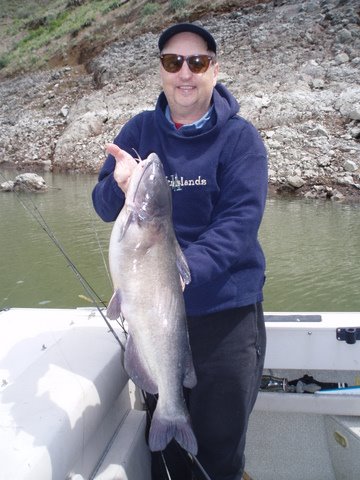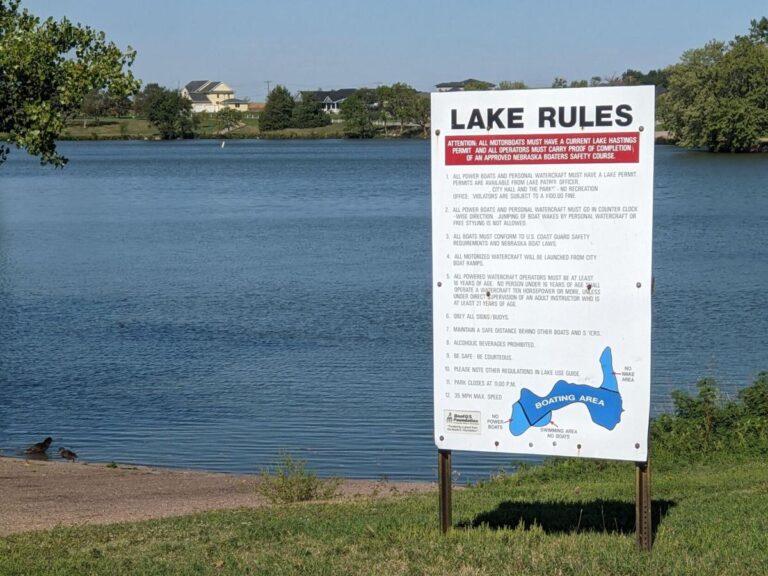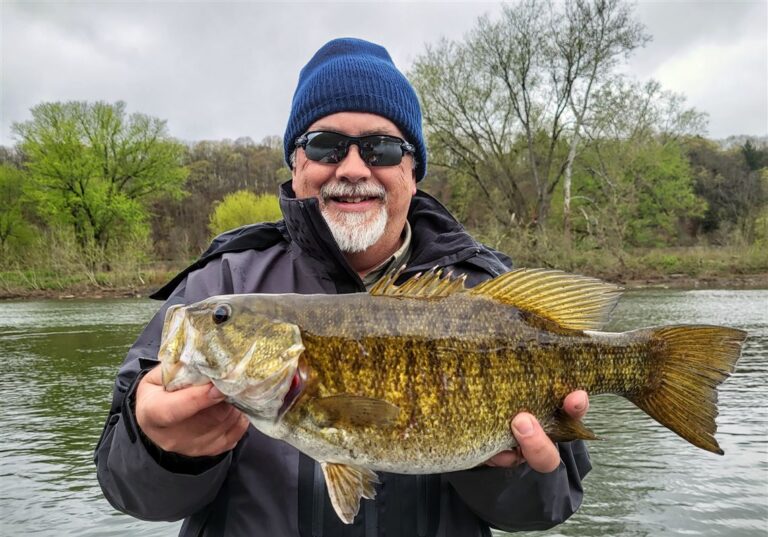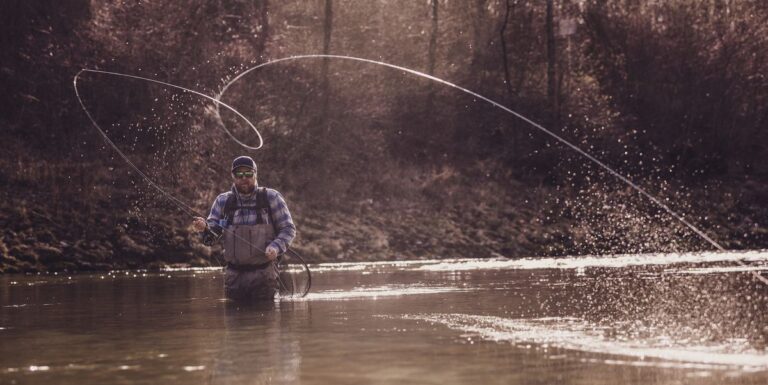Understanding lake fish behavior is vital for any angler. Lake fish respond to environmental factors, such as temperature, oxygen levels, light, predators, and available food sources.
Knowing the behavior of specific species will increase the chance of catching a trophy fish significantly. The understanding of fish behavior plays a significant role in success, especially for novice anglers looking to catch their first fish. Fish behavior varies seasonally, daily, and even hourly, which requires observant attention while fishing.
Anglers can use various techniques to attract fish by replicating the behavior of their prey, such as using colorful lures, bait, and fly patterns that imitate the natural movement of insects and baitfish. Therefore the key is to identify what type of baitfish is available and to match their hatch.

Credit: bassfishinglakeerie.com
Cracking The Code: How To Master The Secrets Of Lake Fish Behavior
Cracking the code: how to master the secrets of lake fish behavior
Understanding The Habitat Preferences Of Different Fish Species
Different fish species thrive in different habitats, and understanding their preferences is key to successful fishing. Some common habitat preferences among different species include:
- Largemouth bass: These fish prefer to inhabit areas with abundant vegetation, such as weed beds or lily pads. They also seek out deeper water
As temperatures rise in summer months.
- Walleye: Walleye can be found in deeper, cooler waters like the great lakes, but they often move to shallower water in the spring for spawning.
- Northern pike: Pike favor weed beds and shallow bays with soft, muddy bottoms. They are known to ambush their prey in these areas.
- Trout: Trout prefer colder water temperatures and can often be found near springs and in areas with shaded cover like rocks or downed trees.
Examining Water Temperature And Its Effect On Fish Behavior
Water temperature can have a significant impact on fish behavior. By examining water temperature, anglers can predict where fish are likely to be located at any given time of the year. Some key insights to keep in mind include:
- In summer months, many freshwater fish species move to deeper water where the temperature is cooler.
- In spring and fall, fish are more likely to be found in shallower water due to the more temperate water temperatures.
- For coldwater species like trout, the optimal temperature range is between 50-60 °f. Once the water gets too warm, these fish will seek out cooler areas like deep pools or shaded covers.
Analyzing Water Quality And Its Impact On Fish Behavior
Water quality is a critical factor in fish behavior. Poor water quality can deter fish from an area, while cleaner water with proper oxygen levels can attract more fish. Some key indicators of good water quality include:
- Clarity: Clear water with a low sediment content is typically a good indication of high water quality.
- Oxygen levels: Fish require oxygen to survive, and as such, water with low oxygen levels will deter fish from an area. Look for areas with good water flow and aeration.
- Ph levels: Most fish species thrive in water with a neutral ph of around 7.0.
The Role Of Weather Conditions In Fish Behavior
Weather conditions can have a significant impact on fish behavior. Understanding how weather conditions affect fish can help anglers better predict where and when fish will be more active. Some key insights to keep in mind include:
- Cloud cover: Cloudy days can be good for fishing, as fish are more likely to be active in these conditions. Overcast skies can also make it easier for anglers to see fish in the water.
- Temperature changes: Large swings in temperature can cause fish to become less active or move to deeper water. Gradual changes in temperature are more likely to keep fish active and in shallower water.
- Wind: Wind can help create a current in the water, which can attract fish. However, overly windy conditions can make fishing more challenging.
Taking Your Lake Fishing To The Next Level: Expert Tips And Tricks
Taking your lake fishing to the next level: expert tips and tricks
With proper knowledge of lake fish behavior, any angler can take their fishing experience to the next level. If you want to increase your chances of catching fish, you need to understand how they behave in different environments. Here are some expert tips and tricks that can help you do just that.
Reading Water Movement And Detecting Fish Activity
The ability to read the water and detect fish activity is crucial when it comes to lake fishing. Here’s what you need to know:
- Observe the water surface for any disturbances, ripples, or waves that could indicate fish activity.
- Watch for any birds diving into the water, which may indicate a school of fish.
- Use a fishfinder if you have one, to locate schools of fish in deep water.
- Pay attention to the depth of the water, as different fish species prefer different depths.
- Keep an eye out for underwater structures that can attract fish.
Choosing The Right Lure And Bait For Different Fish Species
Different fish species in a lake have varying preferences when it comes to bait and lures. Here are some tips to help you choose the right bait or lure for your target fish species:
- Research the fish species you intend to catch and their feeding habits before selecting your bait or lure.
- Select a bait or lure that matches the color and size of the fish species’ natural prey in the lake.
- Use live bait such as worms or minnows for species like bluegill, perch, or catfish.
- Use artificial baits such as jigs, spoons, or crankbaits for species like bass, trout, or pike.
Mastering Casting Techniques For Different Fishing Scenarios
Casting techniques are vital to ensure that your bait or lure reaches the right spot in the lake. Here are some tips to help you master casting techniques:
- Select the right rod and reel for the fish species you intend to catch.
- Practice different casting techniques such as flipping, pitching, and casting to suit different fishing scenarios.
- Adjust the casting distance according to the depth and water conditions of the lake.
- Use a bobber to suspend bait at a specific depth.
Understanding The Importance Of Patience And Persistence In Lake Fishing
Lake fishing requires patience and persistence, and you need to stay focused and alert throughout your fishing trip. Here are some tips to keep you going:
- Spend enough time in one spot before moving to another location.
- If you do not catch anything, do not get discouraged; the fish may be unresponsive or inactive.
- Stay alert for any changes in fish behavior, bait or water temperature.
- Lastly, always remember to be patient, enjoy the scenery and keep fishing.
By following these tips and tricks, you can increase your chances of catching fish in a lake and take your lake fishing to the next level. Remember to be patient, stay focused and enjoy the experience.
Conclusion
Understanding lake fish behavior is a complex and fascinating topic that requires patience, dedication, and a lot of research. In this blog post, we have explored different factors that influence fish behavior, including temperature, oxygen levels, and food availability. We have also looked at various techniques and equipment that can help anglers better understand fish behavior and increase their chances of catching them.
By following these tips and tricks, you can become a more skilled and successful angler. Remember to always respect the environment and the fish, and to keep learning and improving your skills. With practice and perseverance, you can unlock the secrets of lake fish behavior, and enjoy the thrill of catching your favorite species.
Happy fishing!






